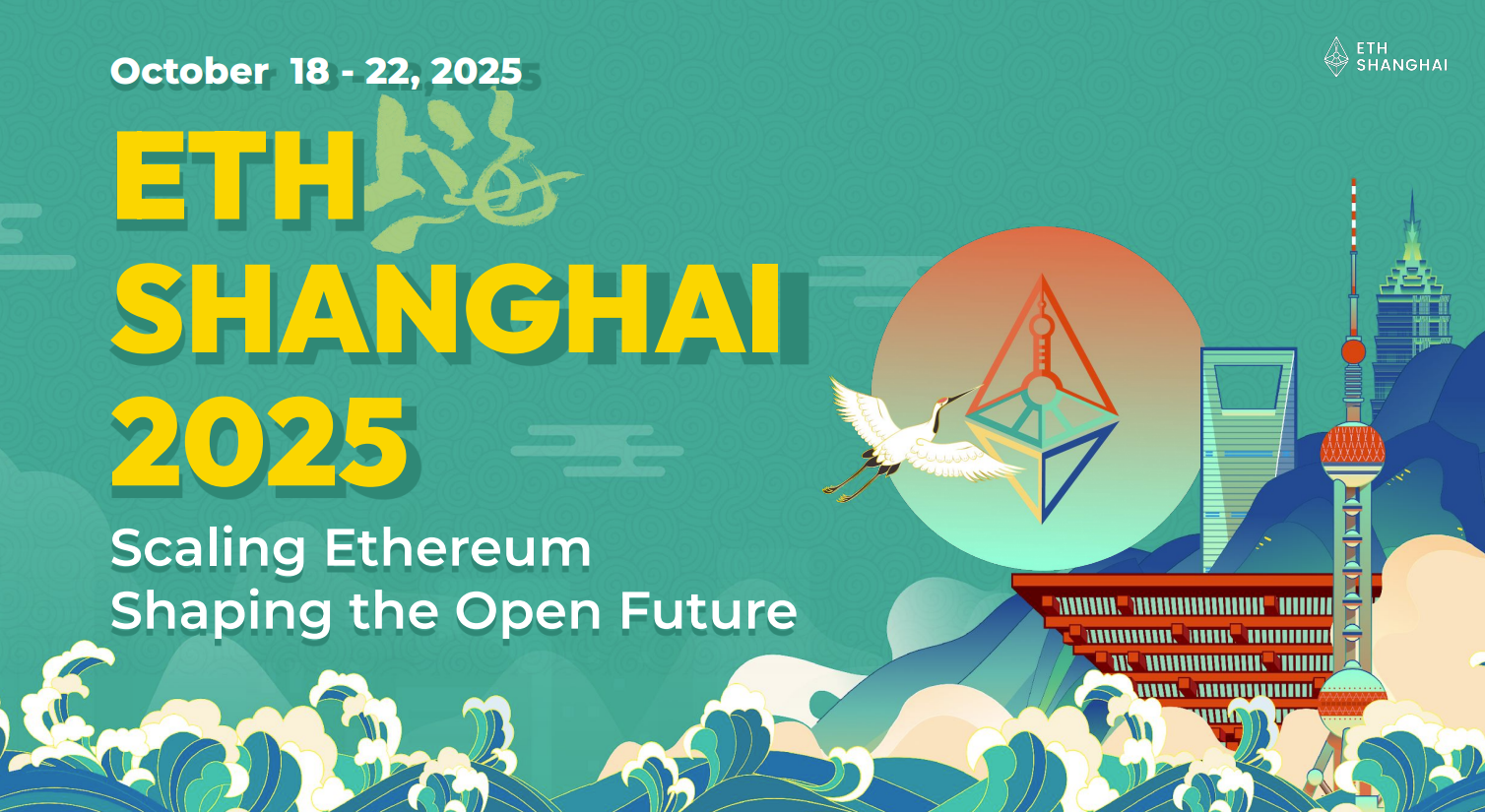Author: Nancy, PANews
On November 5, Bitfire Technology ( 1611.HK ), a Hong Kong-listed company, held a product launch event at the Grand Hyatt Hong Kong, officially announcing the launch of its new international business brand, Bitfire, and the construction of a global licensed trading service matrix, marking a key step in its internationalization and compliance process.
This matrix will leverage the company's strengths in compliant operations and centralized services, focusing on four core business modules: the Bitfire Exchanges cluster, modeled after the compliant Japanese exchange BitTrade; Bitfire Prime, a private-bank-level digital asset management product; Bitfire Hub, a partnership with local exchanges; and DAT Plus, a service targeting top-tier assets. Thus, Newfire Technology aims to build a full-chain service covering compliant digital asset trading, OTC bulk trading, custody, and asset management, targeting high-net-worth and institutional clients, emphasizing professionalism, customization, and compliance. This strategic layout is logically similar to Galaxy Digital's model. It's worth noting that BitTrade is currently launching an independent funding round.
Against this backdrop, PANews interviewed Weng Xiaoqi, Executive Director and CEO of Bitfire Technology. In the interview, Weng Xiaoqi introduced Bitfire's differentiated licensing strategy, shared his insights on the evolution of exchanges, crypto compliance, and emerging sectors such as DAT, and discussed his personal career transition. Regarding the market outlook, he believes that future bull and bear cycles will be more complex, but the cryptocurrency market has not yet entered a bear market; rather, it is in a transitional phase.
Compliance is the only way forward; a "direct operation + joint operation" strategy is being adopted to build an exchange matrix.
The global crypto asset market is entering a phase of rapid adoption. Latest data shows that the number of crypto holders has now exceeded 600 million, and Newfire Research Institute predicts that over 1 billion people will hold crypto assets in the next three years. However, at the same time, the crypto trading industry is undergoing a profound structural transformation.
"In the past, the 'Big Three' exchanges often mentioned in the crypto world were mostly offshore platforms. But in recent years, the entire industry landscape has been changing rapidly, which can be summarized into two development directions, or two quadrants: one is decentralization, and the other is licensing," Weng Xiaoqi pointed out in an interview.
He further pointed out that in terms of licensing, exchanges are gradually moving from unlicensed operation to compliance and regulatory systems. For example, mainstream licensed exchanges in Hong Kong such as HashKey and OSL, as well as BitTrade under NewFire, represent this trend. While the development of licensed exchanges may be slower, they offer higher security and long-term stability, which is the main theme of the future compliant market.
Meanwhile, another important path is decentralization. Platforms like Hyperliquid, Uniswap, and Aster, which have emerged in the last two years, represent the disintermediation and protocol-based nature of trading models, representing another direction of innovation. In addition, some "lightweight trading venues" are emerging. Taking the US Bitcoin and Ethereum ETFs as examples, they can, in a sense, be seen as lightweight trading tools, providing compliant trading channels for digital assets to investors within the exchange. If considered as "alternative exchanges," their market inflow is already comparable to traditional giants like Binance.
From a macro perspective, Weng Xiaoqi pointed out in an interview that the survival space for offshore exchanges is gradually shrinking. In the past, regulatory bodies in various countries have been figuring things out as they go, exploring and formulating rules one by one, resulting in a slow process. In the next few years, global digital asset regulation will exhibit a "building block effect," meaning that regulatory practices in one region can be directly referenced or reused in other regions, and the cumulative transmission of regulatory experience will accelerate the pace of global regulation. As regulatory frameworks in various countries are gradually improved, the offshore model, lacking compliance channels, faces more and more restrictions and bans. Compliance has become an irreversible trend in the industry. For Xinhuo, as a listed company and licensed corporation, compliance is the only way forward. Although it was once one of the world's leading offshore exchanges, it is now more focused on the licensed field. For example, it assisted in building HashKey, Hong Kong's first licensed exchange, and also has extensive experience in licensed trading.
Therefore, for regions with a large population base (such as Japan, with a population of over 100 million), Newfire Technology will adopt an exchange model. This model belongs to the "heaviest" level of Newfire's strategy, requiring a long process from applying for licenses and initiating projects, but it can cover a wide range of customers.
To this end, Newfire Technology completed the acquisition of BitTrade (formerly Huobi Japan), a compliant cryptocurrency exchange in Japan, in May 2025. Currently, BitTrade not only maintains its record as the "top cryptocurrency exchange in history by trading volume" in the local digital asset market, but its overall trading ranking has also consistently placed it in the top 5 in Japan (according to CoinGecko ranking data on November 5th). As of the end of September, its client asset size growth rate reached as high as 31%, consolidating the company's overseas market position.
Furthermore, BitTrade has achieved a profit of 663 million yen, providing a replicable model for future expansion into other high-density markets (such as Europe, the Middle East, and South America). Bitfire will use BitTrade as a blueprint to actively build a global licensed trading matrix.
Weng Xiaoqi added that regarding direct sales expansion, the initial key regions planned include Europe, the Middle East, and South America. This decision is still under dynamic evaluation , and Xinhuo Technology will determine which markets are suitable for direct sales and which are more suitable for joint ventures based on the results of global market scanning. For example, in South Korea, they have established contact with a local partner who has local bank accounts and compliance capabilities, and formal cooperation is expected to begin within the next year. The company has also developed a standardized evaluation and consultation mechanism for partners in different regions to ensure the stability and efficiency of its global expansion.
For other countries and regions, Bitfire Hub will also adopt a joint venture partnership model. Currently, Newfire Technology has reached cooperation agreements with several legal entities holding local licenses. They will provide technical and operational support, while the other parties will provide funding and compliance qualifications. This approach leverages Newfire's strengths in operations and security to achieve a win-win situation for both parties.
Bitfire Prime was launched in Hong Kong, targeting high-net-worth clients with a lightweight private banking model.
In sparsely populated but highly capital-intensive regions (such as Hong Kong and Singapore), Newfire Technology adopts a light private banking model.
Weng Xiaoqi told PANews that due to the limited number of local residents, the market size is insufficient to support the construction of a complete exchange, but the high-net-worth client group is concentrated and has high capital density. By precisely serving thousands of high-net-worth clients, Xinhuo Technology has been able to effectively capture the market, with lower operating costs and faster response.
In August of this year, Newfire Technology announced a strategic upgrade, aiming to create the world's first "private banking-grade digital asset steward" product, designed to provide high-net-worth clients with end-to-end digital asset management services. At this brand upgrade launch event, Newfire Technology officially launched its first flagship product, Bitfire Prime APP 1.0, providing comprehensive one-stop private banking services covering everything from concierge-style account opening, trading, custody, asset management, investment banking to trust.
“This product is very unique. Most mainstream exchange apps on the market are geared towards retail users and tend to be self-service trading. However, the Hong Kong market is dominated by financial institutions and high-net-worth clients, who often do not operate their accounts themselves but require assistance from professional teams,” Weng Xiaoqi told PANews.
He further explained that Bitfire Prime is designed specifically for high-net-worth clients, with each client assigned a dedicated digital asset manager to provide tailored, personalized services. The account opening process is flexible and efficient, available in person or at a branch, and takes an average of only 3.25 days to complete—faster than typical virtual asset service providers. Membership requirements are based on Hong Kong Professional Investor (PI) standards, requiring at least HKD 8 million in traditional investment assets. Each client has their own exclusive community, receiving daily real-time market updates and analysis from the team. Users simply confirm trading instructions within the app, which are then executed by the manager—convenient and secure throughout the process. In addition, Bitfire Prime offers dedicated banking channels and large deposit/withdrawal services, one-stop asset management and investment banking services, and supports a diverse range of asset management products and virtual asset trusts. Clients can even make wills and arrange inheritance within their trust accounts.
At the trading platform level, Bitfire Prime partners with licensed exchanges such as Hasykey and OSL, and already holds Hong Kong's Type 1, 4, and 9 licenses, as well as a trust license, sufficient to support its existing business operations. The company is currently evaluating whether to apply for a Type 7 securities trading license. In the future, if clients have higher-level compliance needs, Bitfire Technology will apply for licenses independently or through partnerships, depending on the circumstances, to match market pace.
Weng Xiaoqi pointed out that through this service system, private banking-grade digital asset stewards have achieved a one-stop solution from account opening, trading, custody, asset management to trust. Especially with the next bull market approaching, Newfire Technology hopes to help more high-net-worth individuals easily, safely, and compliantly enter the cryptocurrency market.
Since its product launch, Newfire Technology's business has experienced rapid growth. At the press conference, Weng Xiaoqi disclosed that the high-net-worth client base has expanded rapidly, with institutional account openings increasing eightfold, adding over 130 new clients, including more than 50 institutional clients. The company expects its overall assets under management to grow from $40 million to $500 million within three months, representing approximately a twelve-fold increase.
He frankly admitted that the key to Xinhuo Technology's ability to launch the product in such a short time lies in its clear positioning and flexible pace. "If we followed the traditional path of applying for a license first and then starting the business, it would take at least two years. Instead, we chose to upgrade the product within the existing compliance framework by using a 'lightweight trading platform' approach. These businesses actually already existed, but they lacked a clear positioning. Now, through the concept of 'private banking-level concierge,' we have made the story clear."
Weng Xiaoqi believes that this model is essentially similar to ETFs or DATs (Digital Asset Treasury Companies), all being a new generation of compliant, lightweight digital asset trading venues. "Today's exchanges are no longer limited to the traditional offshore model. The industry is evolving rapidly, and we focus on the real needs of our clients. Wherever our users are, we go, customizing the most suitable products and services for them."
Staking has become the core advantage of Ethereum DAT, and the competition relies on four key factors.
In recent years, DAT strategies have gradually become one of the most popular sectors in the US stock market, attracting significant market attention. Represented by Bitcoin, Ethereum, and Solana, DAT innovatively combines cryptocurrency and stock models, providing investors with a new asset allocation option.
Newfire Technology's upcoming DAT Plus plans to integrate mainstream cryptocurrencies using an investment banking model, achieving integrated management of issuance, custody, and asset management.
“ DAT is gradually becoming a more flexible and efficient investment tool than ETFs. DAT demonstrates significant advantages in capital utilization, liquidity, and integration with traditional capital markets. As Wanxiang Blockchain Chairman Xiao Feng once said, ‘ETFs are good, DAT is even better.’ The emergence of DAT marks a new stage in crypto finance; it not only fills the gaps in ETFs but also promotes the deepening integration of asset tokenization and capital markets,” said Weng Xiaoqi.
Currently, Newfire Technology is focusing on preparing for the establishment of an Ethereum DAT company, but the specific launch time still depends on the impact of market fluctuations on DAT. He pointed out that if existing DAT collapses under market shocks, this model will be proven false; however, leading DAT products are currently stable, with mNAV hovering around 1, and no serious de-anchoring phenomenon has occurred. If it can weather this round of adjustments, the DAT model will withstand the test, and its future development will be more confident.
The reason for choosing Ethereum over Bitcoin, according to Weng Xiaoqi, is that Ethereum has a broader user base in Asia, and many of the early adopters of Ethereum were also Asian teams. Furthermore, Bitcoin already has mature ETF strategies, limiting the differentiated value of adding DAT. The core advantage of Ethereum DAT lies in its staking rewards. ETFs are subject to regulatory requirements, typically limiting more than 50% of their assets to staking, thus restricting total returns. Ethereum DAT, on the other hand, allows for more flexible staking allocation, resulting in higher returns, which is its core value proposition compared to ETFs.
Currently, DAT (Digital Amount Targeting) has taken the lead in the European and American markets, but it is not yet widespread in the Asian market. Weng Xiaoqi believes that having a leading Asian team launch DAT for the Asian market will make it easier to gain trust and participation. In contrast, European and American KOLs (such as Tom Lee) have limited influence in Asia, and investors may adopt a wait-and-see attitude. In addition, regulation is also an influencing factor. For example, Hong Kong has strict requirements for DAT companies, limiting their ability to expand equity capital, while the US market is more flexible, which is why many funds choose to launch DAT in the US stock market.
According to Weng Xiaoqi, to become a top DAT, multiple factors are needed: (1) Fair and just initiation structure : Some DAT initiators in the European and American markets have excessively high interests, which can easily lead to a loss of trust from retail investors and limit the scale of development; (2) Initiator's appeal and financial strength : The scale should reach more than 500 million US dollars to support subsequent expansion; (3) Team's communication ability with the market : The front-end representative needs to accurately tell the project story to attract the target audience; (4) Market conditions : Market conditions have a huge impact on the fundraising results. The fundraising difficulty in a bull market and a bear market is completely different. Sometimes the market conditions even determine whether a DAT is successful or not.
A virtual asset trust solution is launched, specifically tailored for family clients.
With the increasing popularity of virtual assets globally, more and more high-net-worth individuals are paying attention to the secure management of digital assets and wealth transfer. While the traditional trust system is relatively mature in legal theory, it still faces many practical challenges when dealing with virtual assets, such as asset security, ease of inheritance, and tax compliance.
According to Weng Xiaoqi, compared with traditional trusts, Xinhuo Technology's trust plan has several significant differences in design philosophy and execution mechanism:
• Tailored for Virtual Asset Scenarios : Traditional trusts primarily target tangible or fiat currency assets such as cash, real estate, and equity. However, the characteristics of virtual assets, such as private key management, on-chain records, and anonymity, present unique challenges in inheritance and custody. Xinhuo achieves secure custody and compliant inheritance of virtual assets by combining legal compliance with the regulatory mechanisms of financial institutions.
• Optimize asset succession and tax structure : Newfire's trust solutions not only focus on asset security, but also achieve identity segregation and tax optimization for clients through flexible trust structures, enabling virtual assets to be passed on steadily under the premise of legality and compliance;
Addressing common pain points in the industry : In the past, many people have tried various methods to "pass on" their virtual assets—some write down their private keys on paper and leave them to their families, but this carries significant risks; others store them in exchange accounts, but this cannot avoid issues such as complex operations or privacy leaks. These methods are neither secure nor professional enough. Newfire's solution, through its institutionalized and legalized design, ensures the secure management of virtual assets both before and after death, preventing asset losses due to operational errors or insufficient understanding.
• Guaranteed by a licensed trust institution : Xinhuo itself possesses a trust license, which ensures the legality and operability of our virtual asset trust scheme. During the business development process, Xinhuo Technology overcame multiple obstacles in areas such as salary structure and system design to ensure the scheme could be truly implemented.
A comprehensive perspective is the biggest challenge; future bull and bear cycles will be influenced by more complex factors.
"I'm like a chef who walks into the kitchen, sees what ingredients are available, and immediately starts cooking. The important thing is action," Weng Xiaoqi said in an interview. After leaving HashKey at the end of last year for family reasons, he joined Newfire Technology in August this year and launched a series of products in just two months, demonstrating his consistent execution and agile style.
Recalling his time at Huobi, Weng Xiaoqi said, "When we took office, we made a solemn pledge: if we didn't achieve our goals, we would resign. Our speed and strong execution are the impressions we left on the industry." At HashKey, he was similarly able to quickly drive the team to implement new products and strategies, enabling the company to rapidly turn around and become the market leader. Now, as one of the major shareholders of NewFire Technology, Weng Xiaoqi sees this as his last entrepreneurial venture, fully leveraging his rich experience and rapid implementation capabilities.
When discussing his reasons for joining Newfire Technology, Weng Xiaoqi stated in an interview, "We all believe that the Asian market still has great potential, and there are still many unmet market demands. In the past, Asia was the center of the crypto industry, but with policy changes, the industry's focus has shifted to Europe and the United States. Now, with increased global investment in Web3, we hope to make a memorable contribution to the Asian market, represented by Hong Kong." He added that Newfire Technology itself is one of the earliest Web3 concept stocks in Hong Kong with a long history, and Xiao Feng believes that the new round of industry development will be carried out through listed companies, with capital and power participating in cryptocurrency businesses through listed companies. Therefore, he encouraged Weng Xiaoqi to join Newfire and leverage the platform of licensed businesses to promote industry development.
Facing the differences between Newfire Technology's business model and that of the original exchange, Weng Xiaoqi believes the biggest challenge is the need for a more comprehensive perspective . "In the past, I only focused on industry development and Web3 business; now, we must develop our business in conjunction with the rules of licensed businesses." He accumulated system experience during his time at HashKey, enabling Newfire Technology to quickly implement its licensed business model. He astutely recognized that the global trend towards compliance is irreversible, the space for offshore exchanges will gradually shrink, and decentralized exchanges and new types of exchanges may become alternatives. Weng Xiaoqi has also transformed from an industry expert into a key figure capable of integrating traditional finance (TradFi) with crypto businesses, while simultaneously driving a fully licensed, global financial group strategy. This is a completely new proposition, and may be a global challenge, but Newfire Technology possesses the best foundation to address it.
When discussing the relationship between Avenir Capital and Xinhuo Technology, Weng Xiaoqi pointed out in an interview that Avenir Capital was the earliest family office established by Li Lin, and later expanded into new business areas. For example, they are currently also advancing exchange business targeting institutional clients. Xinhuo Technology, on the other hand, focuses more on serving retail users. The two are complementary rather than competitive in terms of business direction. For example, in asset management, we will cooperate with Avenir's family office team; in the future, they will focus on expanding global institutional exchange business, while we will focus on building licensed exchanges for retail clients. Weng Xiaoqi emphasized that Xinhuo Technology and Avenir Capital are organically complementary in terms of business direction and resource synergy. Li Lin is both the founder of Avenir and the largest shareholder of Xinhuo, but Xinhuo maintains independent operation in specific business matters.
Regarding the plans for RWA (Real Asset Tokenization) and stablecoin businesses, Weng Xiaoqi stated that Xinhuo Technology will not directly issue stablecoins, but will provide custody, purchase, and exchange services. Currently, there are few RWA cases in the market, and the market appears overvalued. Xinhuo will temporarily observe the situation, prioritizing the implementation of existing, established businesses, and considering strategic expansion once the market matures.
Furthermore, regarding the current market situation, Weng Xiaoqi believes that the cryptocurrency market has not yet entered a bear market, but rather is in a transition phase. He pointed out that Ethereum's rapid rise necessitates a correction to support levels; macroeconomic factors such as interest rate cuts and the entry of sovereign wealth funds and financial institutions are providing support to the market. At the same time, the 10/11 attacks, which resulted in approximately $40 billion in liquidations, have also caused a short-term decrease in liquidity, and the market needs time to recover. He believes that bull and bear cycles are no longer as pronounced as they were in the past four years, and future bull and bear market factors will be more complex, including the entry of traditional financial funds and changes in macroeconomic policies.







